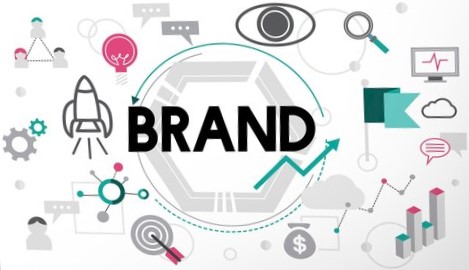A logo is more than just a visual symbol; it’s the face of your brand, a key identifier that tells your audience who you are at a glance. But what happens when your logo no longer represents your brand’s evolution or the changing marketplace? That’s where rebranding comes in. Rebranding isn’t just about updating a design; it’s a strategic move that, when done right, can revitalize your brand, connect with new audiences, and set the stage for future growth.

When to Consider Rebranding
Understanding the right time to rebrand is crucial to maximizing its impact. Here are key scenarios where rebranding your logo might be necessary:
- Outdated Design: Design trends evolve, and what was once modern can quickly feel dated. If your logo no longer resonates with your audience or feels stuck in the past, it might be time for an update. An outdated logo can signal to customers that your brand is not keeping up with the times, which can negatively impact your brand perception.
- Shift in Business Strategy: As businesses grow, their focus, products, or services often shift. If your brand has evolved beyond what your logo represents, a redesign can align your visual identity with your current goals and market position. For example, a company that started with a focus on one product line but has since expanded into new areas might need a logo that reflects its broader offerings.
- Targeting a New Audience: Entering new markets or appealing to a different demographic may require a refresh. A logo that appeals to a younger audience might differ significantly from one that targets a more mature demographic. Rebranding can help your company speak directly to your desired audience, ensuring your message and aesthetics align with their values and preferences.
- Mergers and Acquisitions: When companies merge, combining two identities into one cohesive brand is essential. A new logo can symbolize the unity of two entities, representing the strengths and values of both. The challenge here is to create a logo that honors both legacies while forging a new, unified brand identity.
- Negative Connotations: If your brand has suffered from negative press or associations, rebranding can help reset public perception. A fresh logo can be part of a broader strategy to distance your brand from past issues and signal a new era for your company.
How to Rebrand Effectively
A successful rebranding process involves more than just a new design; it’s a comprehensive strategy that requires careful planning and execution.
- Research and Strategy: Begin with thorough research. Understand the reasons behind your rebrand and define clear objectives. Conduct market research to gauge how your current logo is perceived and what your target audience values in a brand. Additionally, study your competition to identify industry trends and find ways to differentiate your brand.
- Involve Stakeholders: Engaging stakeholders in the rebranding process is crucial. This includes employees, customers, and partners. Gathering feedback from these groups can provide valuable insights and foster a sense of ownership in the new direction.
- Retain Core Elements: While rebranding often involves significant changes, it’s important to retain any elements that still work. This might be a color scheme, a particular symbol, or a typeface that is already well-recognized. Maintaining some continuity can help ease the transition for your audience and preserve brand equity.
- Test Before Launch: Before fully committing to a new logo, test it with focus groups or through a soft launch. This approach allows you to gather feedback and make adjustments before a full-scale rollout. A phased rollout can also help minimize the risks associated with a dramatic change.
- Promote the Change: Communication is key when rebranding. Clearly explain the reasons behind the rebrand and what it represents. Use the rebranding as an opportunity to engage with your audience through campaigns, press releases, and social media. Highlight the benefits of the change and how it will enhance their experience with your brand.
Case Studies: Successful Rebranding Examples
- Example 1: Airbnb
- Airbnb’s 2014 rebrand is a textbook example of how a logo update can redefine a brand. The company transitioned from a wordmark to the now-famous “Bélo” symbol, which represented “belonging.” This rebrand aligned perfectly with their mission to make people feel at home anywhere in the world, and it helped elevate Airbnb from a simple lodging platform to a global community brand.
- Example 2: Starbucks
- Starbucks has undergone several logo revisions, each one a response to the company’s evolving identity. Their most significant change came in 2011 when they removed the word “Starbucks” from the logo, leaving just the iconic mermaid. This move signified the brand’s growth beyond coffee, reinforcing their identity as a global lifestyle brand.
Common Pitfalls to Avoid
Even with the best intentions, rebranding can go wrong. Here are some pitfalls to watch out for:
- Rushing the Process: Rebranding is a significant undertaking that requires time and careful consideration. Rushing through the process can lead to missteps, such as failing to adequately test the new design or not considering the impact on your audience.
- Ignoring the Audience: A rebrand that doesn’t consider audience feedback can backfire. It’s essential to ensure that the new logo resonates with your target audience and reflects their needs and values.
- Overcomplicating the Design: Simplicity is key in logo design. Overdesigning a logo can make it less memorable and harder to recognize. The best logos are those that are simple, timeless, and versatile.
Wrap-up
Rebranding your logo is not just about making a design change; it’s about strategically repositioning your brand to align with your current goals, audience, and market conditions. When done right, it can breathe new life into your brand, attract new customers, and set the stage for future success. However, it’s essential to approach the process with a clear strategy, engage stakeholders, and thoroughly test your new design to ensure it resonates with your audience and stands the test of time.




